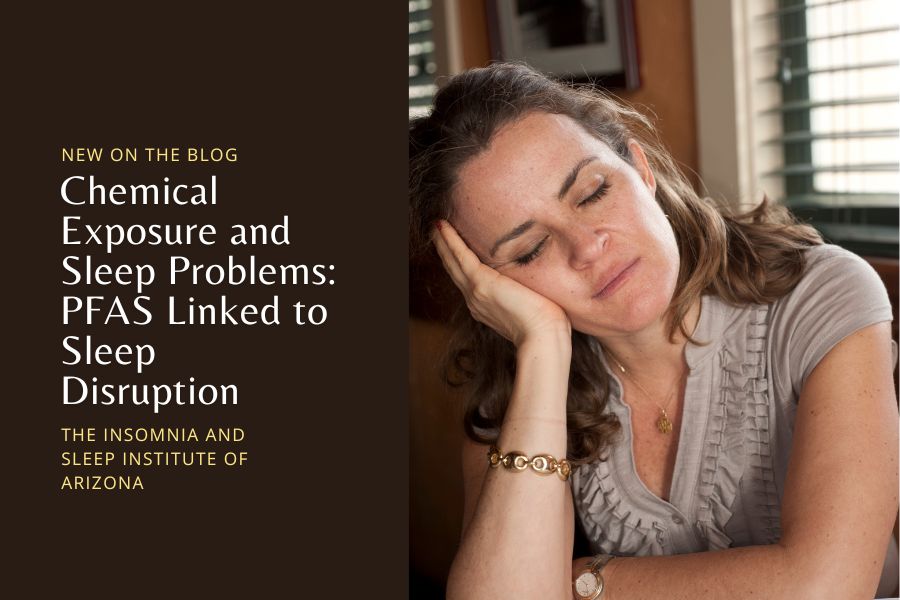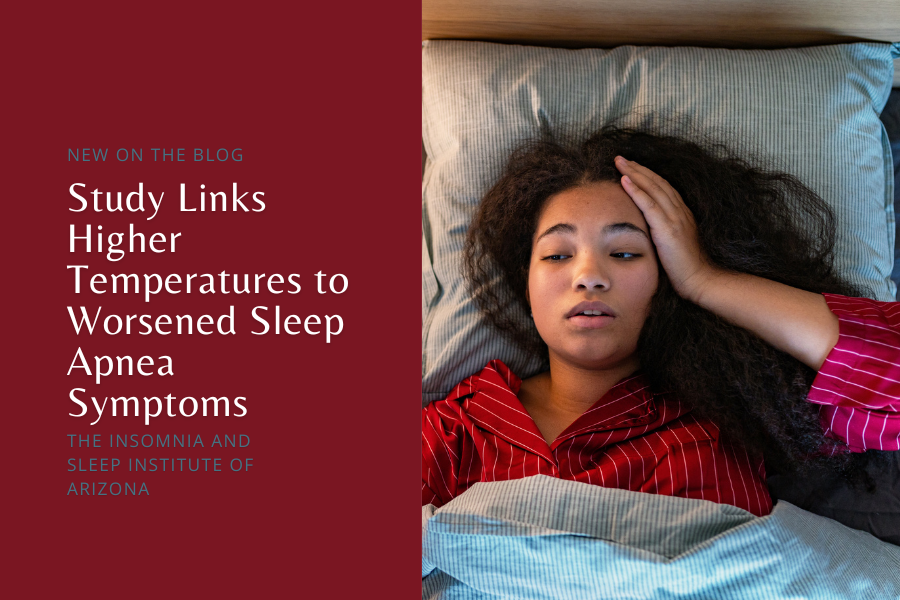Exposure to certain chemicals might be quietly robbing you of a good night’s sleep. Studies reveal that over 97% of Americans have PFAS in their bloodstream. But it’s not just about exposure. Research suggests that these “forever chemicals” could be linked to sleep issues.
What Are PFAS, and Why Are They a Concern?
Per- and polyfluoroalkyl substances (PFAS) are synthetic chemicals used widely since the 1940s. They’re found in various industrial and consumer products, from nonstick cookware to firefighting foams. PFAS, often called “forever chemicals,” are highly resilient in the environment and resist natural breakdown. Even minimal exposure can gradually lead to buildup within the body. Such accumulation presents significant health concerns over time.
- Ubiquitous presence: PFAS have been detected in air, water, and soil worldwide. In the United States, the Environmental Working Group (EWG) found PFAS in the drinking water of over 200 million Americans.
- Health risks: Studies have linked PFAS exposure to various health concerns. The CDC emphasizes potential associations with liver damage, high cholesterol, and hormone disruption. Additionally, some cancers, including kidney and testicular, are connected to PFAS exposure risks.
- Longevity in the body: PFAS compounds are bioaccumulative. Once ingested or inhaled, they persist in the human body, particularly in blood and organs, for years. Some PFAS compounds can stay in the body for up to eight years.
- Government actions: Awareness of PFAS risks has led to stricter regulations. For instance, in 2021, the EPA announced a plan to limit PFAS contamination and establish more stringent safety guidelines for drinking water. Several states have also introduced PFAS-related restrictions on food packaging and firefighting foam.
How Does PFAS Impact the Human Body?
PFAS interferes with metabolic, immune, and hormonal processes. Research links them to several negative health outcomes, often affecting critical body systems.
- Metabolic disruption: PFAS can interfere with fat and glucose metabolism. A study published found that elevated PFAS exposure was associated with an increased risk of metabolic syndrome, a condition that raises risks for heart disease, diabetes, and stroke.
- Hormonal effects: Certain PFAS compounds act as endocrine disruptors. They mimic or interfere with hormones, affecting bodily functions from growth and development to mood regulation. For example, PFAS can interfere with thyroid hormone levels, which is important in metabolism, energy, and overall health.
- Immune system impairment: PFAS exposure may also weaken the immune system’s response. Studies have shown reduced vaccine response in children exposed to PFAS. Additionally, certain PFAS are classified as immunotoxic. These chemicals can weaken immune function, making people more prone to infections.
- Carcinogenic potential: Some PFAS compounds have been identified as carcinogenic. A 2018 study by the International Agency for Research on Cancer (IARC) classified PFOA. A type of PFAS, as a possible human carcinogen. Evidence shows higher rates of kidney and testicular cancers among individuals exposed to high levels of PFAS, often through industrial exposure or contaminated water.
- Liver damage: PFAS builds up in the liver, potentially causing toxicity. Animal studies show that some PFAS compounds enlarge the liver and cause tissue changes. Human studies also link PFAS exposure to higher liver enzymes, signaling stress.
And, What Did This Study Reveal About PFAS and Sleep?
A study investigated a concerning link between per- and polyfluoroalkyl substances (PFAS) exposure and sleep disruption in young adults. The researchers analyzed how PFAS in blood plasma relates to sleep quality. They focused on the effects of specific PFAS chemicals. Their study also explored biological mechanisms that may connect these chemicals to sleep issues.
Summary of Key Findings
- PFDA, PFHxS, and PFOA exposure: Linked to shorter sleep duration.
- PFOS exposure: Associated with increased sleep disturbance and impairment.
- Proteins (e.g., HSD11B1, CTSB): Identified as mediators, suggesting possible metabolic and immune pathways through which PFAS could affect sleep.
Here’s a breakdown of the study’s key findings:
1. Focus on Sleep Duration and Quality
The study measured two critical aspects of sleep: duration and quality. Researchers found significant associations between specific PFAS chemicals and shorter sleep duration, sleep disturbance, and sleep-related impairment. Key PFAS linked to sleep issues included PFDA, PFOA, PFHxS, and PFOS, each showing different types and levels of impact.
- PFDA (Perfluorodecanoic Acid): At baseline, higher PFDA levels were associated with a reduction in nightly sleep duration. For each increase in PFDA exposure (measured by tertiles), sleep duration decreased by approximately 0.39 hours (about 23 minutes) per night. While this may seem minor, cumulative sleep loss can compound. This can lead to significant sleep debt and impaired function over time.
- PFHxS (Perfluorohexanesulfonic Acid) and PFOA (Perfluorooctanoic Acid): In follow-up assessments, elevated levels of PFHxS and PFOA were linked to similarly reduced sleep duration. Higher PFHxS exposure reduced sleep by about 0.39 hours. PFOA exposure shortened sleep by around 0.32 hours. The data suggest that higher PFAS levels are linked to less sleep.
- PFOS (Perfluorooctanesulfonic Acid): Unlike PFDA, PFOS exposure did not directly impact sleep duration but was associated with sleep disturbance and sleep-related impairment. With each tertile increase in PFOS exposure, sleep disturbance scores rose by 2.99 points. Impairment scores also increased by 3.35 points. These findings suggest PFOS impacts sleep quality more than sleep quantity.
These associations point to PFAS potentially influencing both the length and quality of sleep in exposed individuals.
2. Methodology: How Was PFAS Exposure and Sleep Impact Measured?
Researchers recruited 136 young adults from 2014 to 2018. They followed up with 76 of them between 2020 and 2022. Using high-resolution mass spectrometry, researchers measured plasma concentrations of seven PFAS compounds: PFOS, PFOA, PFHxS, PFHpS, PFPeS, PFNA, and PFDA. Sleep outcomes — self-reported by participants — included sleep duration, sleep disturbance, and sleep-related impairment.
- Self-reported sleep measures: Validated tools assessed sleep duration, disturbances, and impairments, ensuring reliable data collection. This approach maintained consistency across the study timeline.
- Multiple linear regression analysis: To analyze associations, researchers employed multiple linear regression to compare PFAS exposure in tertiles with sleep outcomes. The approach controlled for potential confounding factors, enabling clearer comparisons.
- Computational toxicology and mediation analysis: Researchers conducted a computational toxicology analysis using the Comparative Toxicogenomics Database and the Tox21 database. They examined links between specific genes associated with both PFAS exposure and sleep-wake disorders. Their findings identified genetic and protein-related mechanisms potentially linking PFAS to sleep outcomes.
3. Biological Pathways: The Role of Proteins and Genetic Links
In addition to epidemiological data, the study examined potential biological pathways through which PFAS exposure could disrupt sleep, specifically focusing on proteins as mediators. The results identified several metabolic and immune-related proteins that might bridge PFAS exposure to sleep disruptions.
- 11-beta-dehydrogenase isozyme 1 (HSD11B1): This protein, identified through mediation analysis, is involved in cortisol regulation. Disruption in cortisol levels has been linked to altered sleep-wake cycles and increased stress responses. Elevated levels of HSD11B1 could indicate that PFAS exposure may increase cortisol, thereby affecting sleep.
- Cathepsin B (CTSB): Another protein implicated in the study, CTSB, is involved in immune response and inflammation. Increased levels of CTSB have been linked to inflammatory responses, which can interfere with sleep regulation and result in sleep disturbances. Inflammation can make restful sleep difficult, potentially leading to fragmented or lower-quality sleep.
- Immune-related proteins: Other immune system proteins were also flagged. It suggests that PFAS exposure could trigger immune responses that interfere with sleep patterns. Persistent immune activation has been linked to poor sleep quality, and PFAS-related immune activation might explain why certain individuals experience sleep disturbance and impairment.
4. Limitations and Future Directions
While the study gave meaningful associations, it also has limitations. The sample size was relatively small. Self-reported sleep measures might introduce some subjectivity. Additionally, the study’s focus on young adults may limit generalizability to other populations, such as older adults or those with pre-existing health conditions.
Researchers recommend including larger sample sizes and more diverse groups in future studies. Additional research could examine if factors like age, gender, or genetics influence the link between PFAS and sleep. These steps will provide a clearer picture of how PFAS impacts sleep outcomes.
How Can You Minimize PFAS Exposure in Your Daily Life?
Minimizing PFAS exposure can reduce potential health risks. While avoiding PFAS completely is challenging, certain daily practices can help limit exposure.
- Check for PFAS-free labels: Opt for products labeled PFAS-free, especially in items like nonstick cookware, stain-resistant fabrics, and waterproof clothing. Many brands now offer PFAS-free alternatives as awareness of these chemicals grows.
- Avoid certain packaging: PFAS are widely used in food packaging, particularly in grease-resistant products like fast-food wrappers. They’re also found in microwave popcorn bags. Choose fresh or unpackaged foods when possible to limit exposure from these sources.
- Filter your drinking water: Not all water filters remove PFAS. But certain activated carbon and reverse osmosis filters can reduce PFAS levels. The Environmental Working Group provides resources to check for PFAS in local water supplies. With this, it is easier to take targeted action.
- Limit use of stain-resistant treatments: Avoid applying treatments labeled as stain- or water-repellent to fabrics. These may contain PFAS. Instead, choose untreated fabrics or use naturally durable materials when possible.
- Stay updated on recalls: PFAS contamination has led to recalls in various products, from cosmetics to cookware. Regularly check reliable sources for any recalls or safety advisories, especially if you use these types of products often.
Ready to Improve Your Sleep? Trust Our Experts at The Insomnia and Sleep Institute of Arizona.
Sleep is personal, and we understand that. We offer real, compassionate support for those facing sleep challenges like sleep apnea, insomnia, and other sleep disorders. Whether you’re facing sleepless nights or restless days, we’re here to listen, understand, and guide you toward relief.
With expert assessments and caring solutions, we’re committed to helping you find restful, peaceful nights. Let us be your trusted partner in reclaiming your sleep. You deserve a team that truly cares. Contact us.
References
Li, S., Goodrich, J. A., Chen, J. C., Costello, E., Beglarian, E., Liao, J., Alderete, T. L., Damaskini Valvi, Baumert, B. O., Rock, S., Eckel, S. P., McConnell, R., Gilliland, F. D., Chen, Z., Conti, D. V., Chatzi, L., & Aung, M. (2024). Per-and polyfluoroalkyl substances and disrupted sleep: mediating roles of proteins. Environmental Advances, 100585–100585. https://doi.org/10.1016/j.envadv.2024.100585
Monireh Sadat Seyyedsalehi, & Paolo Boffetta. (2023). Per- and Poly-fluoroalkyl Substances (PFAS) Exposure and Risk of Kidney, Liver, and Testicular Cancers: A Systematic Review and Meta-Analysis. La Medicina Del Lavoro, 114(5), e2023040. https://doi.org/10.23749/mdl.v114i5.15065
PFAS Exposure and Risk of Cancer. (2014). Cancer.gov. https://dceg.cancer.gov/research/what-we-study/pfas
Dunder, L., Salihovic, S., Sölve Elmståhl, Lind, P. M., & Lind, L. (2023). Associations between per- and polyfluoroalkyl substances (PFAS) and diabetes in two population-based cohort studies from Sweden. Journal of Exposure Science & Environmental Epidemiology, 33(5), 748–756. https://doi.org/10.1038/s41370-023-00529-x
Key EPA Actions to Address PFAS | US EPA. (2018, March 13). US EPA. https://www.epa.gov/pfas/key-epa-actions-address-pfas
Potential health effects of PFAS chemicals | ATSDR. (2024, January 17). Cdc.gov. https://www.atsdr.cdc.gov/pfas/health-effects/index.html
Perfluoroalkyl and Polyfluoroalkyl Substances (PFAS). (n.d.). https://www.niehs.nih.gov/sites/default/files/health/materials/perfluoroalkyl_and_polyfluoroalkyl_substances_508.pdf
Study: More Than 200 Million Americans Could Have Toxic PFAS in Their Drinking Water. (2020, October 14). Environmental Working Group. https://www.ewg.org/news-insights/news-release/study-more-200-million-americans-could-have-toxic-pfas-their-drinking
The information provided here is not a substitute for professional medical advice. Please consult a healthcare professional for personalized guidance.








